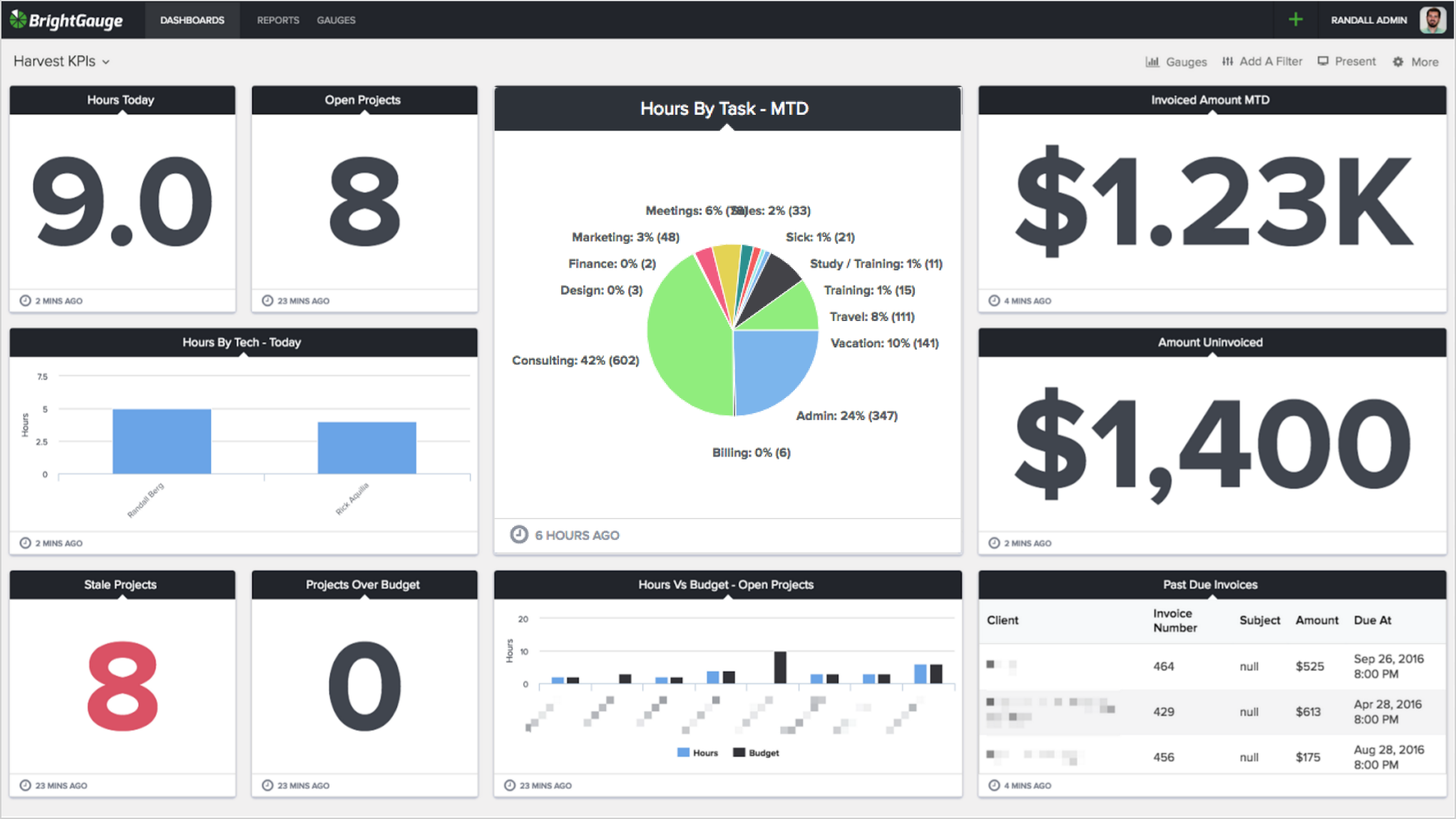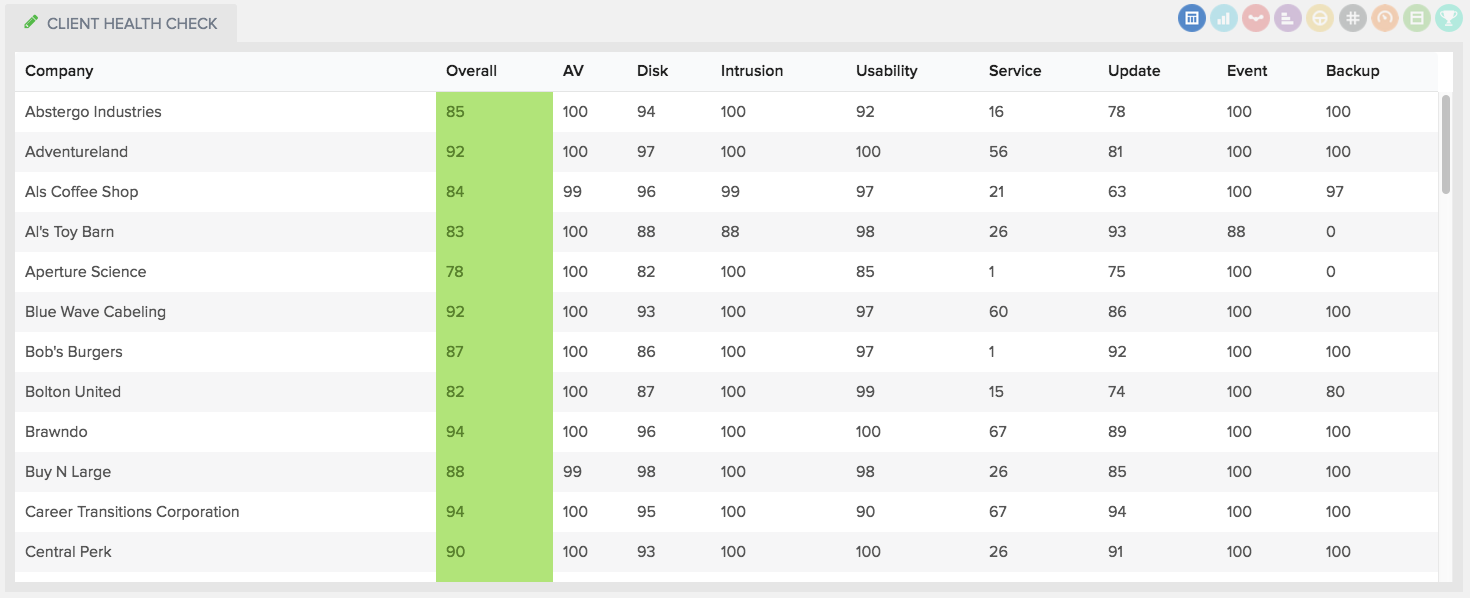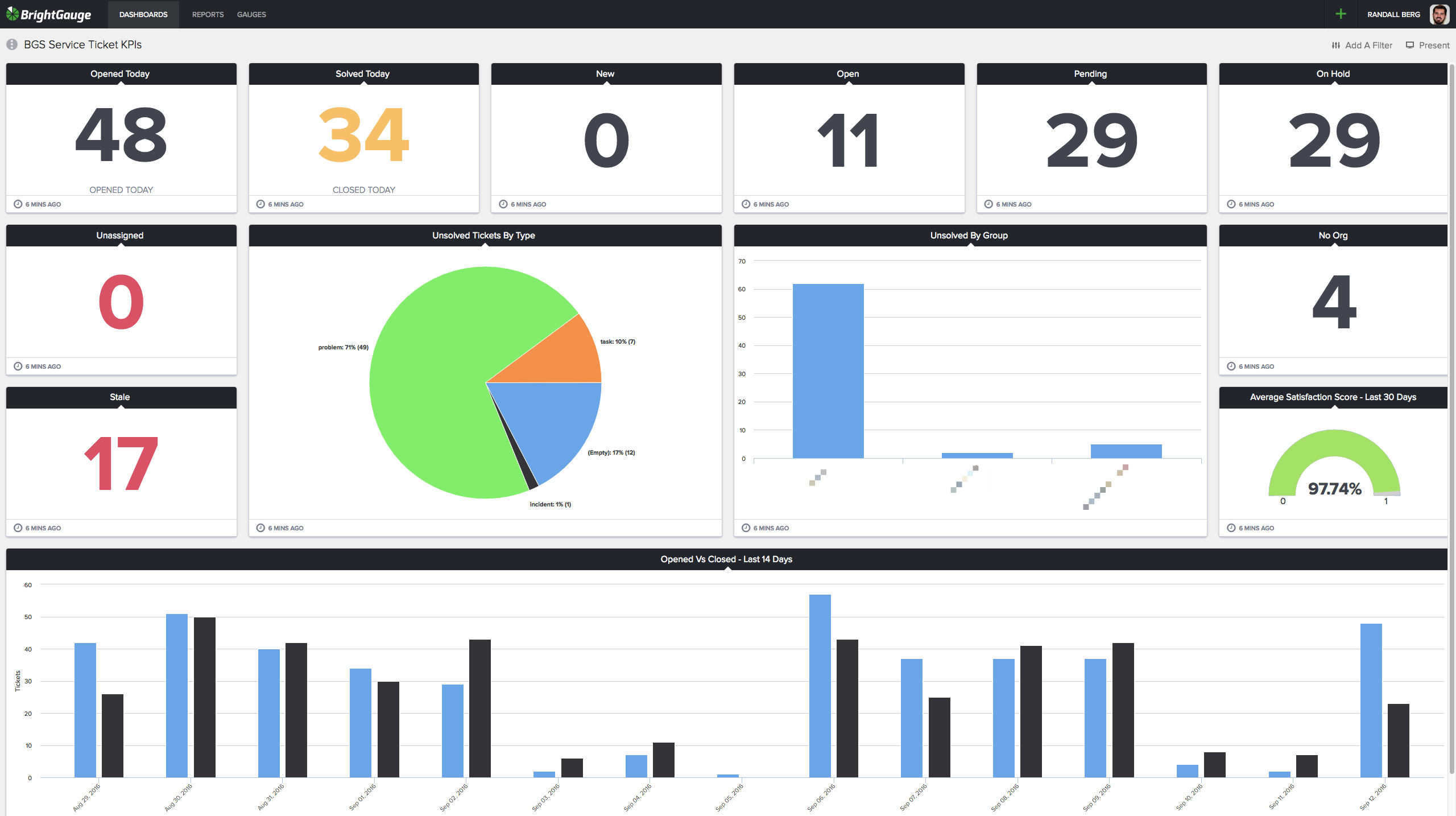A Swedish fiber broadband provider did an experiment in which they had 4 people do everyday tasks while wearing a virtual reality headset. The headset would use a camera to show them everything they ...
A Swedish fiber broadband provider did an experiment in which they had 4 people do everyday tasks while wearing a virtual reality headset. The headset would use a camera to show them everything they would normally see, with a slight delay. It’s an amusing way to show what happens when you see things with a time lag - each participant failed at everyday tasks because they weren’t seeing the world around them in real time. Why then, do people expect to successfully manage a customer service team without real-time metrics to guide them? Since tracking metrics in real-time is one of the most important parts of managing a successful team, we’ve put together a list of the top 4 benefits of monitoring live Zendesk metrics throughout the day: 1. You Will Understand How Your Support Team Is Performing Without real-time metrics, you’ll never understand how your support team is performing. Only how they have been performing. There’s a big difference between those two scenarios. It’s like driving a car by only looking in your rear view mirrors. Sure, you may drive for a little without crashing, but you’re bound to crash the second something unexpected happens. Using real-time metrics allows you to see both what’s in front of you and behind you. By monitoring how your team is performing in real-time, you are able to correct course much faster if you happen to stray from your targets. It also enables you to better predict what will happen in the future by combining current data with historical data. You’ll have a better understanding of how your support team is performing. Additionally, you'll better manage and correct your team when they aren’t performing well. 2. You Can See Where Tickets Are Getting Stuck in the Process It can be tricky to identify where tickets are held up during the support process. There is almost always one or two bottlenecks in the ticket process. A bottleneck could be something your team needs to work on, or it could be the result of your customer's actions. Our sister company, Compuquip, identified two bottlenecks by using real-time data. The first was in the way that customers submitted tickets. Customers would submit tickets via phone, which slowed down the process. They also noticed that their engineers were not triaging tickets effectively. By fixing their two bottlenecks, Compuquip lowered their response time to under 8 minutes. 3. You Will Identify Problem Customers Early with Repeat Ticket Openers There's always one problem customer who your whole team knows by name. Some teams are luckier than others, and it takes them a while to identify who that problem customer is, but every team finds their problem customer eventually. Although when you monitor your metrics in real-time, you won’t need to wait to identify problem customers because you’ll see the data almost instantly. Identifying problem customers early will allow you to identify opportunities to train a customer. This can go a long way in protecting your service team's valuable time. 4. You Can Track How Fast Your Team Is Responding When it comes to responsiveness, we can’t stress the importance enough. The response time of your customer service team can cause a company to sink or swim, because just one dip in responsiveness could result in lost customers. Check out these eye-opening metrics (pulled from a previous blog): Failure to resolve an issue quickly is one of the top 2 reasons for a customer loss. 41% of customers expect a response within 6 hours, and 24 hours is often considered the maximum acceptable response time. Tracking responsiveness in real time enables you to speed up your team’s support right away. You'll be able to prevent your team from slipping on response time in the first place as opposed to realizing and addressing the issues weeks later. with a service ticket dashboard, it's easy to monitor your metrics in real time The Best Way to Track Zendesk Metrics in Real Time There’s no better way to monitor metrics in real time than with BrightGauge and Zendesk together. Using both dashboards and automated reports in one simple solution allows you to display all your key metrics for everyone to see - a surefire way to encourage your team to rally around your company’s goals!

Get to know the newest face at Team BrightGauge, Felipe Donoso... The Early Days Felipe Donoso was born in Guayaquil, Ecuador, to a family blended with Syrian and Spanish roots. At the age of 6, he moved to Miami with his family, and throughout his childhood years, the family would move back and forth between Guayaquil and Miami each year until around the time Felipe turned 12. All of the moving turned out to be a great way for Felipe to really polish his language skills and as a result, he’s fully bilingual - English and Spanish, of course! Like two other BrightGauge team members, Kristian and Stephen, Felipe attended high school at Doral Academy in the Miami area. During that time he started working seasonally in retail with the Hurley brand, before moving forward as Sales Lead, a position that earned him recognition as the youngest person to hold a management position in the brand’s fleet of stores at that time (all while still attending high school). His days at Hurley showed Felipe just how much he loved sales. In particular, he loved to see customer reactions when visitors would take note of a different experience in his store than what they were familiar with at other stores under the same brand name... the effects of a personalized approach to retail operations. Felipe also enjoyed the chance to connect with people of many different nationalities in the retail world, noting that his interest in languages often made it easy to for him to connect with shoppers. After his 3 years with Hurley, Felipe moved to the Billabong retail brand as Assistant Store Manager. One of his first projects to help enhance the overall consumer experience in his store was to start a customer service and sales guide that would make it easier for his team to become true brand ambassadors instead of following the typical mechanical method often found in retail stores. While he enjoyed his time in retail, Felipe was ready for a change, and that’s when he found BrightGauge… Joining Team BrightGauge Once Felipe heard about the opening for Sales Development Rep on our team, he was “immediately sold.” During the interview process, Felipe met quite a few of our team members and had the opportunity to learn more about what drives our team, our goals and ambitions as a company, and the MSP industry as a whole. Felipe knew BrightGauge was the opportunity he had been looking for and he was excited to get started in a new industry because he realized that BrightGauge would be the perfect place to continue growing his career. He tells us that he’s thrilled to have an opportunity to make a strong impact on our company, and we can’t wait to see what Felipe will accomplish on our team! Outside the Office When Felipe isn’t rolling up his sleeves to learn all about BrightGauge and the world of business intelligence, he loves to spend his free time being active with activities such as soccer, Crossfit, and longboarding. He’s a huge fan of Liverpool FC (soccer) and tells us they’re the best team in the world. He also enjoys spending time watching documentaries and searching for new music to add to his collection. We can’t forget to mention Felipe’s huge interest in learning more about the world, as he’s fascinated by different cultures and ways of life. Join us in giving Felipe a big BrightGauge welcome!

Harvest offers time tracking, expense tracking, and invoicing software to tens of thousands of businesses, and we’re excited to make it easier for those businesses to track their expenses and hours. Never miss out on an hour of billable time again with BrightGauge and Harvest! Our Harvest integration gives you the ability to track and manage your hours, expenses, and invoices in real time. Not only will you save time for yourself, but you’ll also ensure that no details are missed! Here are a few of the key metrics you can track with a Harvest dashboard: Hours vs Budget helps you track your team’s progress on all projects. Amount Invoiced helps you keep track of all the invoices you sent out this month. Amount Uninvoiced helps you keep track of the work you’ve done, but not yet invoiced. If you’re a Harvest user, then the ease of the product speaks for itself, but here’s what BrightGauge customers have to say about the integration: “Any Harvest user should use BrightGauge. It’s a no-brainer. The access to the data that BrightGauge provides is leaps and bounds above what they provide organically,” explains Evan Jones, CEO of Jones IT (read the complete Jones IT case study here). The Harvest integration comes in addition to the sales, support, financial, CSAT, and other data that you can already view in your BrightGauge. In other words, you can get a full view of the metrics that help you run your business, in one place. You no longer need to log into all those separate sources to compile reports and view data for meetings!

Rex Frank founded Sea Level Operations with the core purpose to “Coach IT Managed Service Providers on achieving operational excellence.” With 23 years in the industry under his belt, Rex coaches based on the lessons he’s learned first-hand while moving through the levels from Tech to Director of Operations at a handful of Service Providers. We sat down with him for a conversation on growing and scaling an MSP to maturity, recommendations for service gross margin, and a closer look at the life of a ticket. Coaching Through the Stages of MSP Maturity: Episode Highlights Rex’s introduction and background (0:55) The typical size and scope for a MSP working with Sea Level Operations (6:32) What is it that sparks MSPs to reach out to a service like Sea Level? (7:51) Trends, challenges, and themes Rex is currently seeing in the market (12:47) The Top 5 biggest mistakes MSPs are making when it comes to operations (18:47) 3 concepts that fix a financial problem (26:55) Rex’s target recommendation for service gross margin (29:12) Best in class when it comes to bottom-line for MSPs (34:18) The 4 levers in service gross margin (35:41) Life of a ticket & the utilization lever (39:02) Q&A: best business book, resources to improve as an Executive, parting advice for MSPs, and how to reach Rex (48:44) Books as referenced in the episode: The E-myth Revisited: Why Most Small Businesses Don’t Work and What To Do About It by Michael Gerber Traction: Get a Grip on Your Business by Gino Wickman Want to find out more about The BrightGauge Podcast? Check out all the episodes here.

When it comes to managing a Service Team, every MSP business has their own unique operations, policies, and procedures. But there are also quite a few best practices that we hear our customers talk about from time to time, and we decided it’s time to put those ideas in the spotlight! Our informal panel of experts was made up of Karl Fulljames, VP of Operations at Nucleus Networks, Nick Olerud, Director of Technology at Netrix IT, and Simon Smith, Operations Manager at Air-IT. We asked each of them to share a few gems of advice out of their day to day management techniques, and here’s what they had to say: 1. Transparency is Essential Having the ability to do automated reporting and dashboards makes it easier than ever to keep clients in the loop when it comes to the work that the Netrix team is in charge of every day. And as Nick explains, clients love the transparency that comes as a result of reports and dashboards, and they’re excited that Netrix can produce any of the data they want to see. In fact, the transparency factor is a major differentiator when Netrix meets with prospective clients who are shopping for a MSP solution because the dashboards hanging around their office attest to the level of service that they provide. Nick goes on to say that “transparency also makes conversations with clients much easier if there is a bad week or day because they can see the overall trend of good service. It’s easier for clients to understand that mistakes happen and no one is perfect.” When it comes to his service team, transparency resulting from reports and dashboards also helps to show if his team is struggling to keep up or needs additional training. If the data shows that the team is up to par on their service but there are still delays, then it’s easy for Nick to see when it’s time to hire additional team members. Learn more about Nick's best practices for driving efficiency and managing his service team. “Dashboards have gamified our work, especially the leaderboard gauge. It really sparked some competition in the team - they want to get that little medal next to their name and keep growing. We do a lot of gamification of things at Netrix, so that really fit well with our culture and they have embraced the transparency. They take a lot of pride in their numbers,” explains Nick. An example of the leaderboard gauge with medals 2. Implement an Escalation Process When it came to resolving tickets, Simon and the team at Air-IT noticed that some of them seemed to get stuck in the workflow, while others were quickly settled. To help standardize ticket resolution times, Simon implemented a system with a time limit on how long technicians should hold on to a ticket before it is escalated. As Simon explains, creating an escalation process “is also a way of making sure people have skills and knowledge to deal with issues before they pass it along.” When tickets are escalated, it’s an easy reminder to review and evaluate whether or not there is a need for additional employee training. Additionally, Simon put a process in place where his team calls clients at two points during the day to ensure they are properly kept up to date and to ensure that Air-IT isn’t missing any important updates. As a result, Air-IT noticed a large reduction in the number of incoming phone calls, particularly in the afternoon. By preempting the wave of calls, more resources are free for other tasks, and as a result there has been an improvement in CSAT scores. Tracking CSAT alongside your other metrics is simple with Customer Thermometer 3. Pick the Right Metrics for Your Team Picking the “right metrics” will look a bit different for every MSP team, depending on your KPIs. We’ve talked before about how to choose the most powerful KPIs for your organization, but our panel clued in us on some of the metrics that are most important to them, as well as some of the metrics that they caution other MSPs to think twice about: Karl was quick to point out that metrics aren’t everything, but they do help to improve and highlight things that need to be done. For example, he explains that every service team will have members who are problem solvers by nature - people who are willing and even excited about digging into a complex ticket and seeing it through to the end. On the other side of the coin are team members who prefer to solve numerous quick tickets throughout the day. That’s why when it comes to deciding how you will measure your team’s success, and in many cases how you will also reward them, “you need to choose the metrics that will best motivate each person,” Karl explains. He gives an example with “total ticket count per tech could easily turn into a metric that pushes some on your team to ‘cherry pick’ the tickets they want to work on, because they’re looking for the tickets that are easiest to solve. Meanwhile, the teammate who only had 3 tickets in a single day may have a larger effect on the big picture because they solved the root problem that will avoid 18 additional tickets from being created.” So what about metrics that you should consider using? For technicians, Nick likes to use time utilization so that he can see where they are spending the most time. In some cases, ample amounts of time spent on one ticket could be a red flag that the tech needs more training on a particular topic. Nick goes on to say “For our project team, we want to see how much billable work they are doing in a week. We have a percentage of their time that must be billed each week that will go on top of our recurring revenue. Now it’s easy on a daily or weekly basis to see how much of our time is spent on billable. It keeps us on top of our numbers so that at the end of the month, nothing has fallen through the cracks.” For Simon’s team at Air-IT, there is a particular focus on the 6 KPIs that are a brand promise to all their customers, which can also be found updated on the company’s website each month. With dashboards on the wall near their service desk, they keep an eye on Average Waiting Time, Reactive Tickets Closed, Same Day Fix (Calls), Same Day Fix (All Sources), Overall SLAs Met, and Client Satisfaction. 4. Reports Can Be Used Internally Reporting is two-fold: most MSPs are familiar with the idea of client reporting, but there are also more and more MSPs who utilize internal reports for their teams. Internal reports can serve as a nice supplement to dashboards. Service Team members can easily see when there are items that need attention or a quick resolution, whereas leaders and executives can use reports to track resources. As Karl relays to us, reports make it easy to see which clients are in excess of their SLAs and then the Service Manager can take next steps accordingly: “It’s much easier to collect more money when you have the proof of what the team is actually doing that is outside SLA agreement, or when there are problems caused because the client didn’t move forward with recommendations (such as new hardware). The reports help to generate revenue, and also free up techs to focus on other paying clients,” says Karl. 5. Share CSAT Results with Clients Each month, the team at Nucleus Networks reports back to every client with an assessment of good, bad, and neutral ticket responses. Not only does it highlight the obvious service aces, as well as areas that need to be improved, but it also demonstrates Nucleus’ level of service consistency. As Karl explains, their clients love to see how their team is treated across the board when they call in - not just VIP treatment for executives, but quick resolutions for their entire team. “At the end of the day, an executive who gets fast help may not be the right primary focus if their support level team who are ‘in the trenches’ so to speak are not also getting the same level of help,” explains Karl. Our SmileBack integration makes it easy to share positive, neutral, and negative customer reactions Conclusion While there is no exact formula for managing a Service Team, there are a handful of general ideas that we hear over and over from our customers: Transparency is essential for teams and for clients Put an escalation process into place Choose the best metrics for your team Create reports for internal use Share CSAT feedback with clients Learn more about best practices for managing a service team by downloading the free webinar that we co-hosted along with Nick Olreud of Netrix IT:

70+ Metrics for MSPs
Key metrics and accompanying formulas to help MSPs skyrocket growth and success!
Get your KPIs

“Customer silence isn’t always golden.” In our conversation with Lindsay Willott, co-Founder and CEO of Customer Thermometer, we take a closer look at what customer satisfaction really is, and why every company should be monitoring the metrics tied to it. After all, “just because customers are quiet, it’s not safe to assume they are happy.” From implementing customer surveys to the benefits of tracking customer satisfaction (CSAT), and tips on how to increase survey responses 10x, Lindsay unveils some of the most important things to know about finding value from a simple one-click survey. Benefits of Customer Satisfaction Surveys: Episode Highlights Lindsay’s introduction and background (0:56) The story behind launching Customer Thermometer (4:36) The types of companies who work with Customer Thermometer (6:32) The main challenge with customer satisfaction surveys (8:58) The evolution of the CSAT industry (11:29) Where do customers find the most value with Customer Thermometer? (14:16) How is the CSAT feedback used once collected? (17:06) Achieving a 10x increase in survey engagement (23:05) Highlighting areas of improvement/training for employees using CSAT (24:49) The process from implementation to collecting surveys using Customer Thermometer (27:59) Coming soon at Customer Thermometer (30:09) Q&A: Best business book, resources for professional improvement, parting advice, how to reach Lindsay or get a free trial of Customer Thermometer (32:17) As mentioned in the episode: Book: The 4-Hour Workweek, by Timothy Ferriss Book: Black Box Thinking, by Matthew Syed (find Lindsay’s book review here) Customer Thermometer’s CSAT blog The One-Page Plan (and other growth tools from Verne Harnish) Case study: HiTech Computers interview on how they’ve integrated Customer Thermometer into ConnectWise and their business How to cut your client attrition rate in half… in 2 months Want to find out more about The BrightGauge Podcast? Check out all the episodes here.

As the Network Operations Manager for BlackPoint IT, some of Andrew Hutchison’s main responsibilities are systems monitoring & remediation, managing business continuity services, and automated system patching, to name a few. As BlackPoint’s client list has grown steadily over the years, so has their need for a fleet management solution, as they found themselves responsible for managing 4,000 systems and trying to keep up with where patches were missing. “There was no easy way to track missing patches in LabTech. I could get help from my LabTech Admin, but I really needed a way to consolidate and aggregate the data between LabTech and ConnectWise,” says Andrew. Choosing & Adopting BrightGauge Knowing there had to be a way to better manage his data, Andrew set out looking for a solution for his team. He briefly considered some reporting options within SQL, but when the BlackPoint team found BrightGauge at the ConnectWise IT Nation conference, the decision was quickly made to move forward because of the dual integration with ConnectWise and LabTech. As Andrew reports, the BlackPoint team had a few support tickets in the beginning, but it was never hard for his staff to use BrightGauge, as he goes on to say “everyone caught on quickly.” Results with BrightGauge After getting started with BrightGauge, the BlackPoint team was instantly able to show everything in one report and be much more efficient in their messaging delivery, while also maintaining their fleet. “With the fleet management aspect in LabTech, it really helped us cut down on patch issues and helped us with our warranty reporting. It also helped us when it comes time for the Technical Business Review, to report on things that come from different sources,” says Andrew. More than just another tool in the toolkit, BrightGauge’s commitment towards developing a product that fits the wants and needs of the MSP community has been another reason Andrew is confident that he’s made the right choice. It has been exciting for Andrew to have BrightGauge at his fingertips, because he can easily customize or build upon his data in the platform. With a substantial-sized fleet of over 200 appliances and 800 backups, Andrew reports that he wasn’t always able to see the information that he needed within the Datto portal, so he created a ‘MBC (managed business continuity) Backup Issues’ dashboard to solve the challenge. “We used a SQL datasource and populated the Datto data into SQL tables and assigned thresholds to things. So now we’re using what BrightGauge offers, but with a second SQL table that checks for backup failures every 24 hours for particular backup agents or synchronization issues and they only show up if the threshold is exceeded,” explains Andrew. He goes on to say “for me, the most useful gauges are the Datto gauges.” Benefits Beyond Reporting Although he originally went looking for a reporting tool, Andrew notes that the BlackPoint team quickly came to appreciate how BrightGauge solved other problems in ways they hadn’t anticipated. For example, utilizing BrightGauge reports before putting together their Technical Business Reviews (more commonly known as Quarterly Business Reviews) allowed the BlackPoint team to be proactive on certain issues. “Before, we wouldn’t have a ticket on an issue like patches missing because a machine wasn’t turned on or the Windows version not up to date,” explains Andrew. “What we’re doing is a check and balance aspect of our fleet... and reporting on this to the customer is a huge deal. Before we report on this data, we now have a dashboard and can figure out what needs to be resolved.” He goes on to explain, “The dashboard helps with overall Customer Success. It allows you to know everything about your customers in an aggregated way, so you don’t get blindsided. It’s quality assurance.” Additionally, Andrew reports that BlackPoint has more clarity into the customer side of the business than ever before. Since introducing the Technical Business Reviews that are created from BrightGauge data, customer satisfaction is up and so are retention rates. Plus, the TBRs have also highlighted which customers are not an ideal match for BlackPoint because of issues such as machines that weren’t being updated - a sure conflict towards SLAs and potential red flag for customer profitability. Recommending BrightGauge “If you’re an MSP, I haven’t seen any other tool with the amount of integrations and flexibility to do things your way, than BrightGauge. It’s all packaged there, and it’s all available.”

What do glasses, air conditioning, and data mashups have in common? They’re all valuable tools that people forget about when they're used. You may be using data mashups already, but if not you’ll soon realize how necessary they are… What are Data Mashups and Why are they Valuable? There are two types of data mashups: datasource mashups and dataset mashups. Both are only available in our Advanced plan. Dataset mashups are a combination of two or more datasets into a single gauge. With dataset mashups you could create a Member Scorecard. Datasource mashups are like dataset mashups but are pulled from two or more sources. Metrics such as Tickets Per Endpoint (where you need to pull data from both your PSA and RMM) make this feature a must. Gauges using data mashups provide much more context than traditional gauges because they offer significant insight, even in instances where metrics wouldn’t be useful if apart. Data Mashups in the Wild Ok, that’s a fancy title for mashup examples, but here are some gauges that you need to know because you should be using them regularly: Technician Utilization This Week uses dataset mashups. It pulls data from ticket statistics and member data. Technician Utilization Today also uses dataset mashups. It pulls data from ticket statistics and member data. Advanced Hours Actual Today By Member uses dataset mashups. It pulls data from ticket statistics and member data. Two more datasource mashup metrics which we can provide via our data customization team are Hours Per Endpoint and Margin on Agreements (revenue from QuickBooks - sum of hourly cost from the PSA). Ready to see data mashups in action? It’s as simple as requesting a free one-on-one demo. Note: if you’re an existing customer, send an email over to Support and we’ll be happy to show you data mashups!

Before launching Passportal, Colin Knox spent nearly 2 decades in the MSP business, most recently as the Owner of Xcel Professional Services. In less than 7 years, Colin founded the IT Services business, grew it to $4M in annual revenue, and then lead the efforts in selling the booming company. In our conversation, Colin walks us through each chapter of the story, from growth milestones of an MSP to the idea, process, and transaction of selling the business, plus the valuable lessons he learned along the way. Starting, Growing, and Selling an MSP: Episode Highlights Colin’s introduction and background (0:56) How business changed with each growth milestone at Xcel Professional Services (4:25) Balancing project work with monthly recurring business (8:24) A closer look at Xcel’s size, structure, and more (10:52) Making the mental shift between working in the business vs. working on the business (13:05) The thought process behind selling Xcel Professional Services (16:24) A timeline of activities leading up to the sell (19:00) Addressing the business valuation before starting due diligence (23:49) Lessons learned during the process and transaction of selling Xcel (29:14) How many people do you tell during the process, and when? (34:18) An introduction to Passportal for MSPs (39:10) Rapid-fire Q&A: best book recommendation, favorite resources for personal development, parting advice about acquisitions, how to reach Colin (42:30) As mentioned in the episode: The Lean Startup: How Today’s Entrepreneurs Use Continuous Innovation to Create Radically Successful Businesses, by Eric Ries Driven: How to Succeed in Business and In Life, by Robert Herjavec Want to find out more about The BrightGauge Podcast? Check out all the episodes here.

If you keep up with our Product Updates, you may have noticed that we’re putting out lots of small updates and feature releases lately. Some of these delightful features, as we call them, may contain nothing more than a single gauge, but they are always a great benefit to our customers. This time, we released the LabTech Health Report Gauge (also referred to as the Client Health Check). If you’ve been a long-time LabTech user, you have probably come to rely on this report, and now with BrightGauge it’s even better: Sample Labtech Health Report Gauge The benefits of taking such a granular look at customer health include: The ability to identify trends and issues. For example, you may notice that your AV scores are low across the board. If that's the case, your team may not be updating definitions often enough. A clear look at which clients are in need of attention, before they reach out to you about it! Enhanced ability to serve as vCIO. You’ll have the data necessary to advise your client when upgrades are necessary. See how BrightGauge makes it easy to unleash your LabTech, PSA, and Financial data with easy-to-use dashboards & reports How are the Health Scores Calculated? We don’t do any calculations on our end, instead, we use the calculations that LabTech has created, but we go a bit further by searching in multiple locations for that data. This extra step helps to ensure the accuracy of your data. Here is how LabTech calculates each metric: General: 100 is the highest possible score for each category. 1 is the lowest possible score for each category (even if no points are scored, the score will show as 1). 0 means that the data is not available. Antivirus (AV Health): Checks if an antivirus is on the machine. Worth 50 points Checks if the virus definition files are up to date. Up to date: Less than 8 days old Worth 25 points Checks if an antivirus’ auto protect function is enabled. Worth 25 points Disk (Drive Health): Checks for the number of drives. Each drive is weighted equally so if you had 3 drives and two fully pass their checks you’d have a total score of 67. [(100 + 100 + 1) / 3] Checks if each drive has an acceptable amount of drive space remaining. Worth 15 points Checks if each drive has an acceptable level of fragmentation. Worth 15 points Checks if each drive passed all SMART tests. Worth 40 points Checks each drive for recorded event errors. Worth 30 points Intrusion Health: Checks if the number of failed login attempts for this computer are below the acceptable limit. Acceptable limit set to 25 login attempts. If the number of failed attempts exceeds that limit, a score of 1 (fail) is given, otherwise a score of 100 is given. Usability (Performance Health): Checks the average CPU usage over the last 8 days. Maximum average resource usage allowed is 40%. Worth 30 points. Checks the number of CPU spikes over the last 24 hours. 10% above average CPU usage is considered a spike. Maximum number of spikes allowed within a 24 hour period is 6. Worth 10 points. Checks the average Memory usage over the last 8 days. Maximum average resource usage allowed is 40%. Worth 30 Points. Checks the number of Memory spikes over the last 24 hours. 10% above average Memory usage is considered a spike. Maximum number of spikes allowed within a 24 hours period is 6. Worth 10 points Checks if current OS version meets minimum version requirements. Worth 20 points Service Health: Checks if all critical services are running during agent check-ins. Critical services are Windows services that are not drivers or printers. Each day a score of 1 (fail) or 100 (success) will be given. Even if only one service is stopped, a score of 1 will be given. The score shown is an average over time. Update Health: Checks for Standard Patches that are not installed Standard Patches are patches which are not categorized by Microsoft as a “Critical” or “Security” patch and don’t have any severity assigned. Worth 5 points Detects for Elevated Patches that are not installed. Elevated Patches are categorized by Microsoft as a “Security” update or have been assigned a severity rating below “Critical”. Worth 20 points Checks for Critical Patches that are not installed. Critical patches are categorized by Microsoft as a “Critical” update or have been assigned a “Critical” severity rating. Worth 75 points Event Health: Checks for critical errors in event logs. Backup Health: Checks if there was a successful backup. Each day receives a score of 1 (fail) or 100 (success). The score shown is an average over time. When coupled with all your other data already in BrightGauge, we’re sure that you’ll find tremendous value with the new LabTech Health Report gauge! Learn More About BrightGauge Don’t use BrightGauge yet? BrightGauge helps you to unleash your LabTech, PSA and financial data with easy to use dashboards and reports. Learn more about LabTech + BrightGauge by scheduling a free demo:

I must have missed a memo or something. Since when did people start thinking it’s okay to pay for business intelligence that limits the number of dashboards and reports they can create? That’s like paying for Microsoft Office and then finding out that you can only create 5 documents or spreadsheets a month with it. It’s your data and you should be able to consume it however you want! At least, that’s what we think at BrightGauge, which is why we don’t limit the number of dashboards and reports that you can create. Here’s why you need to have unlimited dashboards and reports: The Benefits of Unlimited Dashboards and Reports There are two primary benefits to having unlimited dashboards and reports: Scalability and the ability to share reports with each and every client. But, to say those are the only benefits is a bit premature. Let’s look at these benefits one by one: Scalability As your organization grows, you’ll need to have more dashboards and reports as new departments are formed, managers and execs are brought on, and staff as a whole increased. If you were limited in the number of dashboards you could create, you'd be unknowingly creating a data dictatorship! If you had unlimited dashboards instead, you’d be able to keep your data democratized as your business grows. We’ve talked about data democratization before, but we can’t stress how important it is! Data democratization allows you to increase transparency, enable your managers and employees to make better decisions and motivate good behaviors in your company as employees see how their work impacts the business. Sharing Reports with Clients The ability to share reports with each of your clients may not seem like a big deal at first, but what if I told you it could increase your bottom line? I bet you’re interested now! Sharing reports with clients will build trust, which, in turn, increases satisfaction and then lowers churn. In addition to increasing client satisfaction and decreasing churn, client reporting paves the way for higher paying clients as it shows them that you are meeting and exceeding SLAs on a consistent basis (which you should be doing if you’re a data driven MSP). Free Your Data Our competitors insist on putting limits to how often you can access your data and make you pay to share it with viewers, but we put you first, and because of that, we won’t charge you extra for creating or sharing new reports and dashboards. If you’re ready to experience the benefits of unlimited dashboards and reports, let us show you how to liberate your data with BrightGauge!












